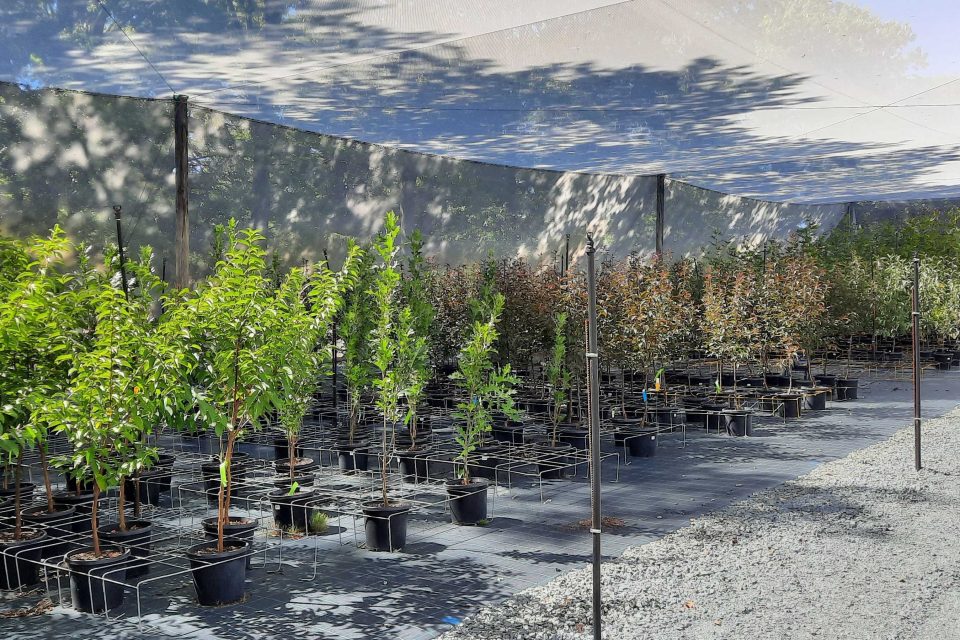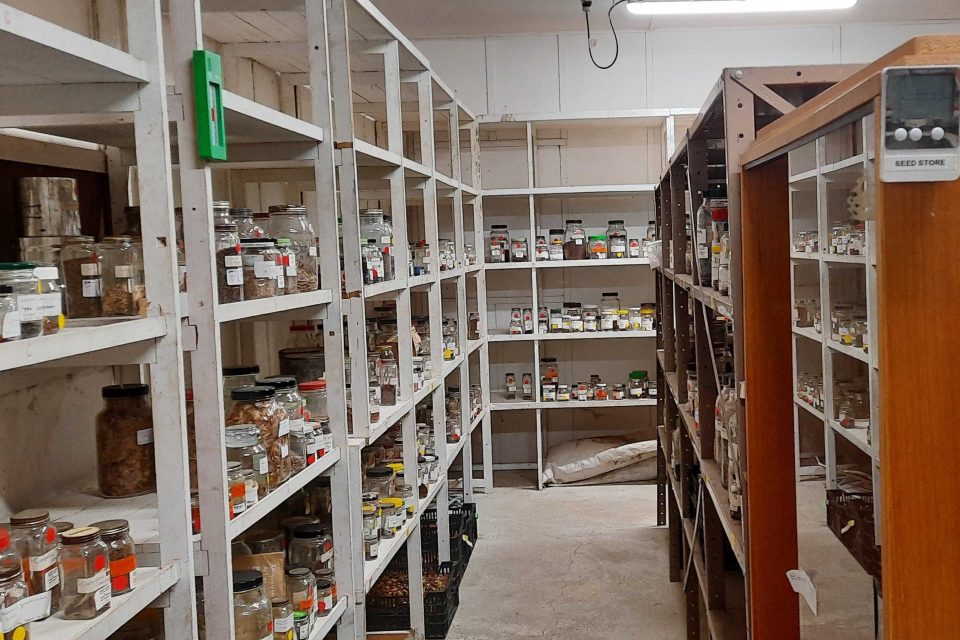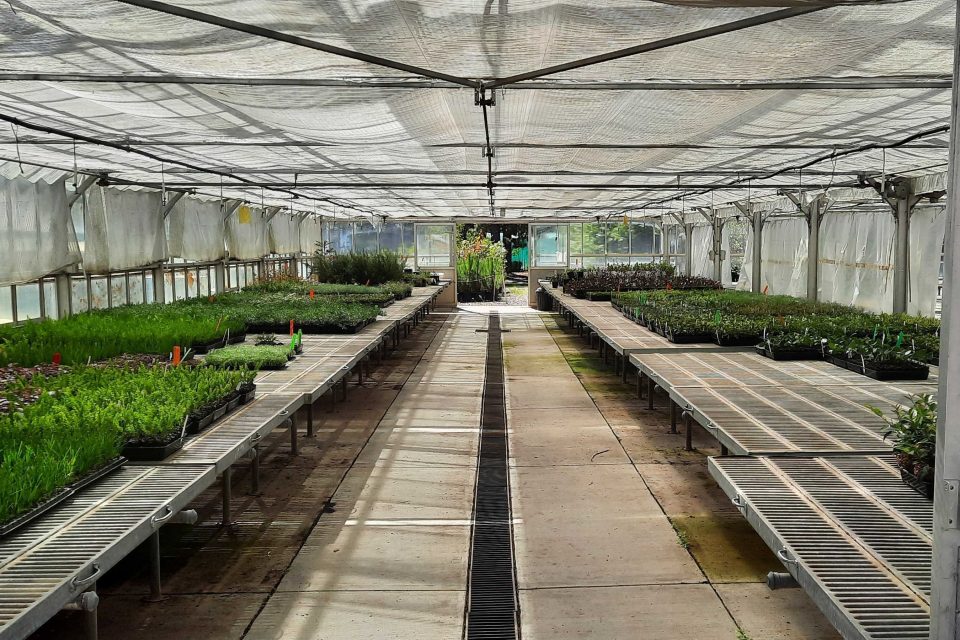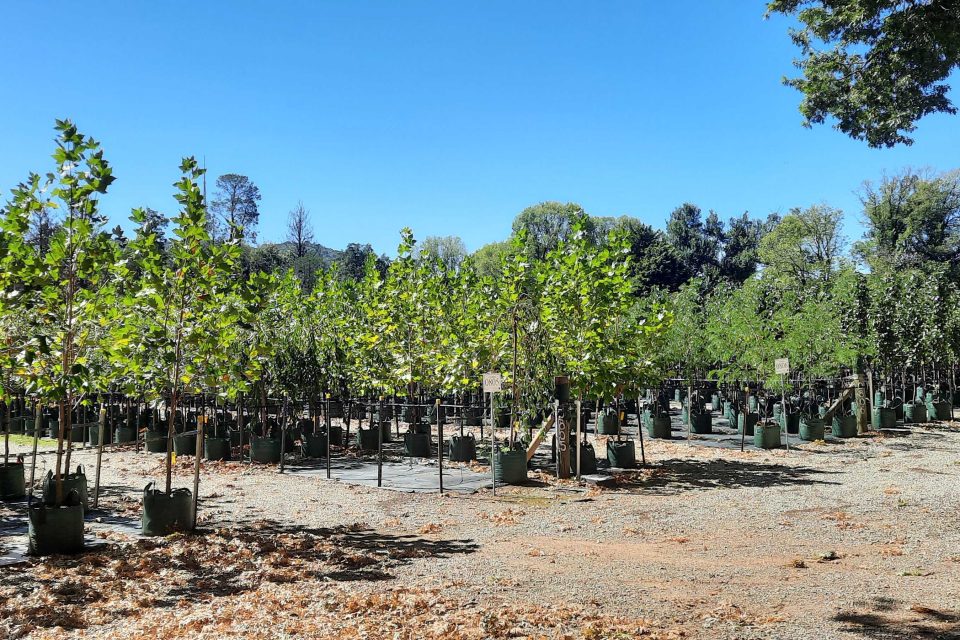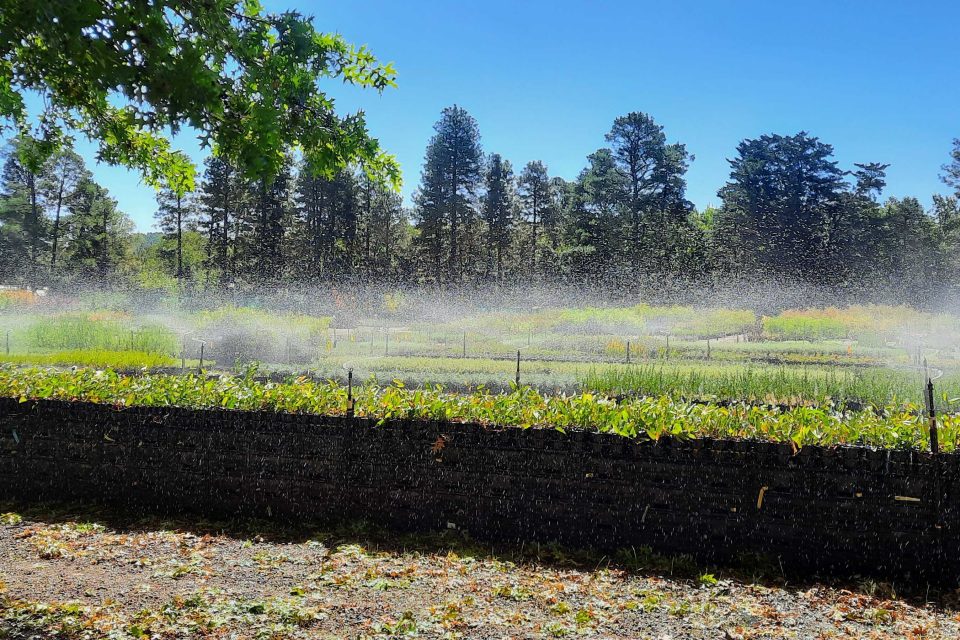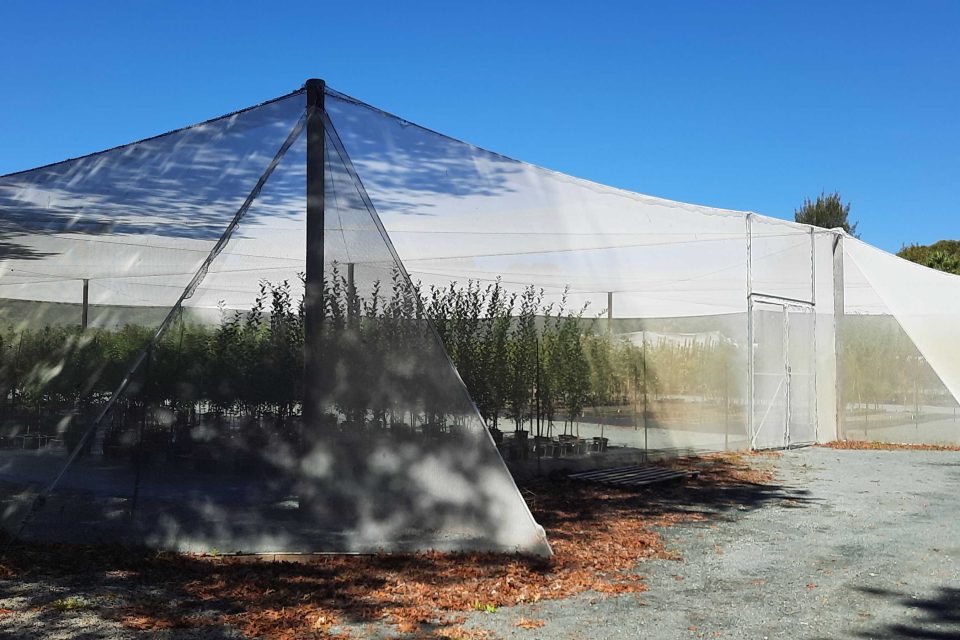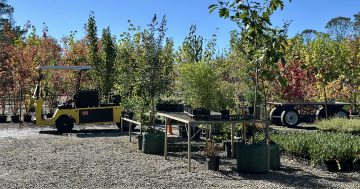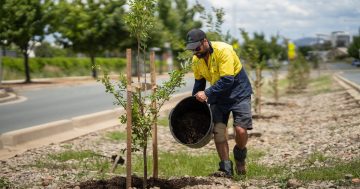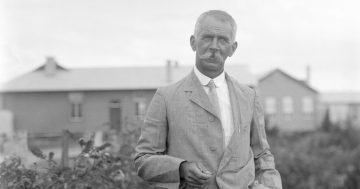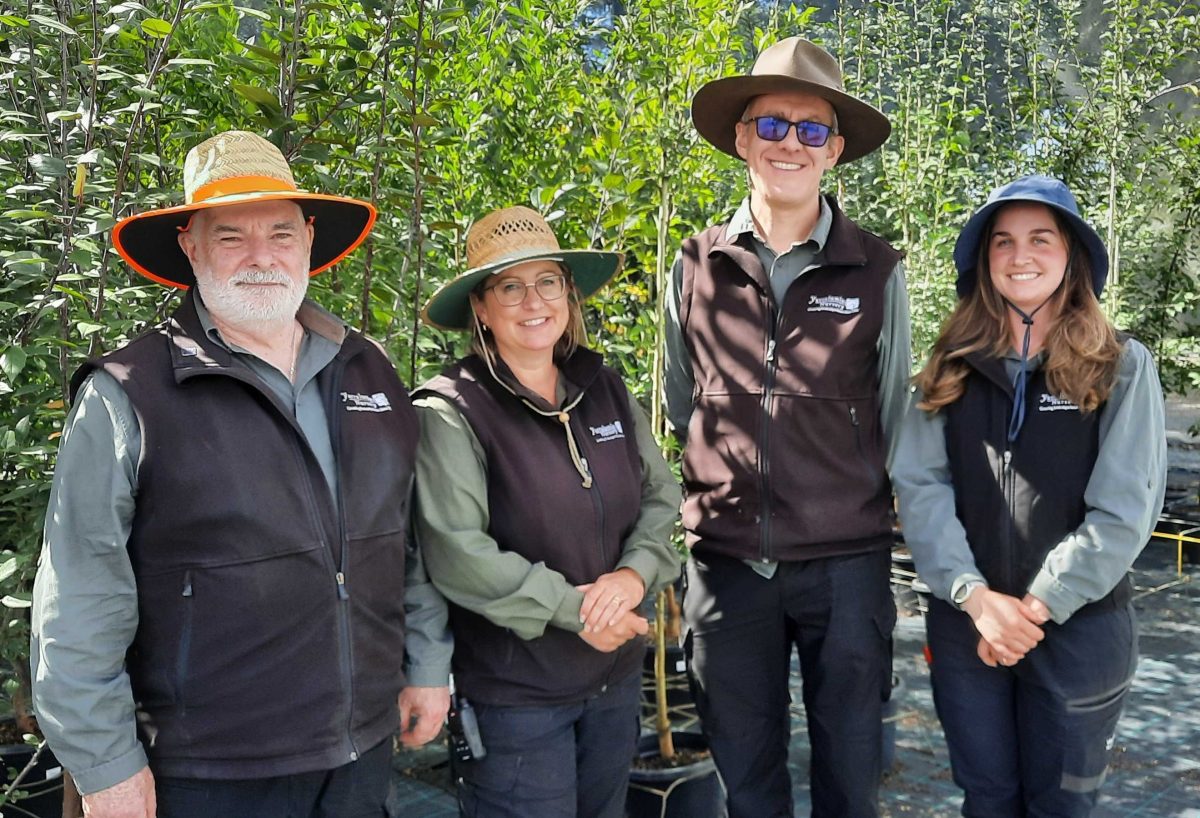
Working for future generations: Sales Manager Farley Hayward, Production Operations Manager Belinda Ryan, Senior Director Dr Matthew Parker and Urban Treescapes Nursery Coordinator Alice Blackshaw. Photos: Ian Bushnell.
Why would horse floats be found at the Yarralumla Government Nursery?
No, it’s not a riddle, just a fun fact from the 11-ha estate where more than 200,000 plants and trees are propagated for government programs and sale to the public.
Horse floats, it seems, are perfect for transporting trees and are often used by the contractors who plant them out as part of the ACT Government’s Urban Tree Program.
“They’ve got the height, protection from the wind and the ramp,” says Production Operations Manager Belinda Ryan.
She is one of four senior staff who recently took me on a tour of the tree-raising part of the nursery – from the treasure house of seeds to seedlings in the glasshouses to the potted saplings and older trees in open areas and under the netted enclosure where they are protected from the predations of parrots and hail storms.
While Canberra loves its parrots, we all know what they can do to a tree. The nursery wards them off with “scary bird” models that wave in the breeze and recorded sounds, with varying success.
The nursery is very much a part of the story of Canberra and is celebrating its 110th year.
Senior Director Dr Matthew Parker and his team, which numbers up to 35 staff, see themselves as part of that continuing history, contributing to the ongoing development and greening of the national capital.
Dr Parker says they stand in the shoes of people like Charles Weston, whose vision took Canberra from the treeless plain to what it is today.
“The sheep paddock to a forested city,” he says.
Ms Ryan says that legacy attracts passionate people who think about the future and realise that what they do today impacts what’s to come.
“What we do here is for our future generations,” she says.
It’s something residents who scorn the free trees planted on their nature strips might like to think about before they rip them out, part of the attrition noted in the recent ACT Auditor-General’s report on the Urban Tree Program.
The report found that the program would struggle to meet its ambitious targets, suggesting that the nursery might not have the capacity or room to deliver the number of trees required.
Dr Parker says that hasn’t been the case so far, but the nursery will need to see how the program develops in the future.
“I know they’re talking in terms of their planning about maybe 5000 or 10,000 trees a year, which is sort of half what we’re doing this year,” he said.
“I don’t see a future issue at the moment. It all depends on the size of a tree, too. When we say ‘tree’, that can be a tube stock.”
Dr Parker says it’s all about pacing the program to maintain steady progress towards the 30 per cent canopy target by 2045.
“If it’s staggered out, I wouldn’t foresee any issues in being able to deliver that program,” he says.
“It is a great thing for the city to strive to achieve that, and having that amount of greenery in the city will be quite transformative.”
The nursery also buys in stock that it can’t furnish itself, growing them and, importantly, acclimatising them to Canberra’s relatively extreme conditions.
It has its yearly germination and propagation cycle, growing trees up to a few years old according to market and program needs and filling orders as required.
The range of species supplied, exotic and native, have been tried and tested, but the nursery is constantly trialling new varieties.
Dr Parker says research is being done on the implications of climate change for Canberra’s urban trees, which will need to be more drought and heat-resistant.
The exotic/native mix for the Urban Tree Program is roughly 50:50 but the destination will often determine what will be delivered. For example, older suburbs where ageing trees need to be replaced will more likely be exotic.
One species that Canberrans have taken to their hearts, particularly this year, is the Crepe Myrtle, which can come in a number of varieties with different colour blossoms.
Ms Ryan says that initially, it was susceptible to powdery mildew, but subsequent varieties are much more disease-resistant and grow to different heights.
“It’s the perfect tree: it’s not too big, and it has something for each season,” she says.
“So you’ve got your flowers in summer where not much is flowering. You’ve got the ornamental bark … and then obviously the lush spring growth, so it’s a tree with a little bit of something for everyone.”
The nursery is an ark that carries more than 220 different plant genera and is a production powerhouse for the bush capital.
After more than a century of serving Canberra, maintaining the green shield under which we shelter as the climate warms has become more important than ever.
While Dr Parker may have played down the warning in the Auditor-General’s report, the government needs to ensure that this haven by the lake can deliver the trees for its canopy program and continue to do its job for another century.


